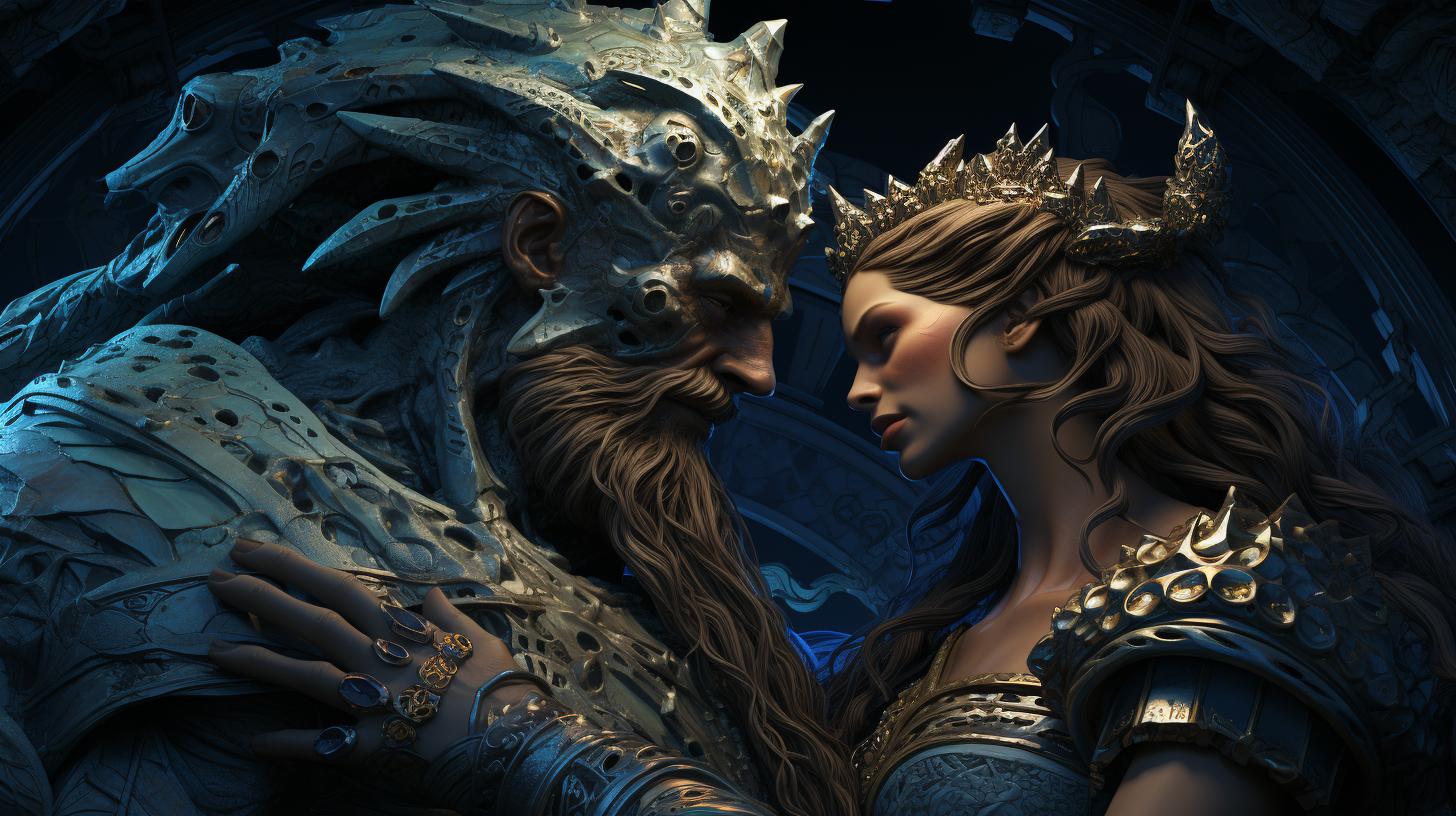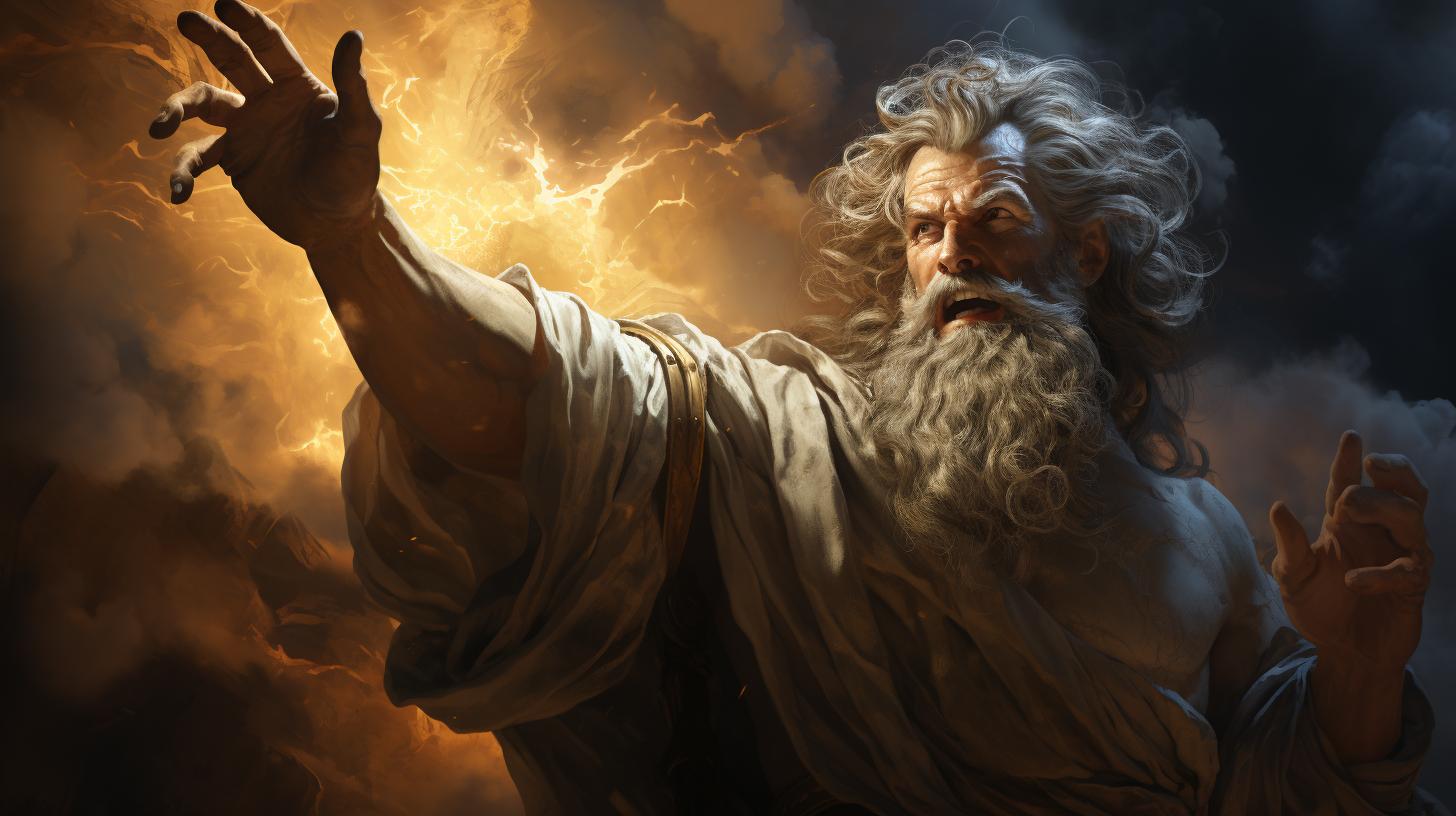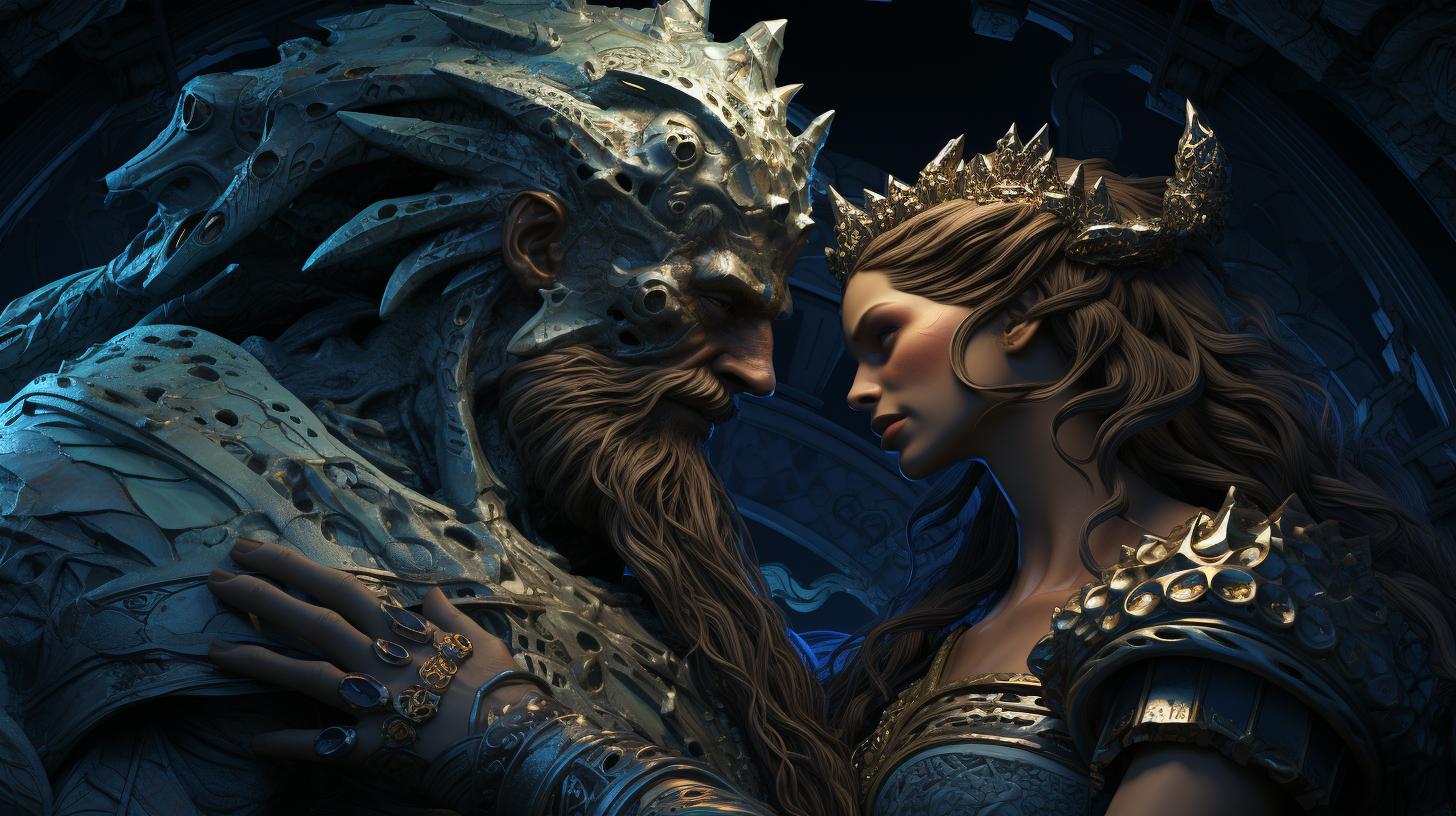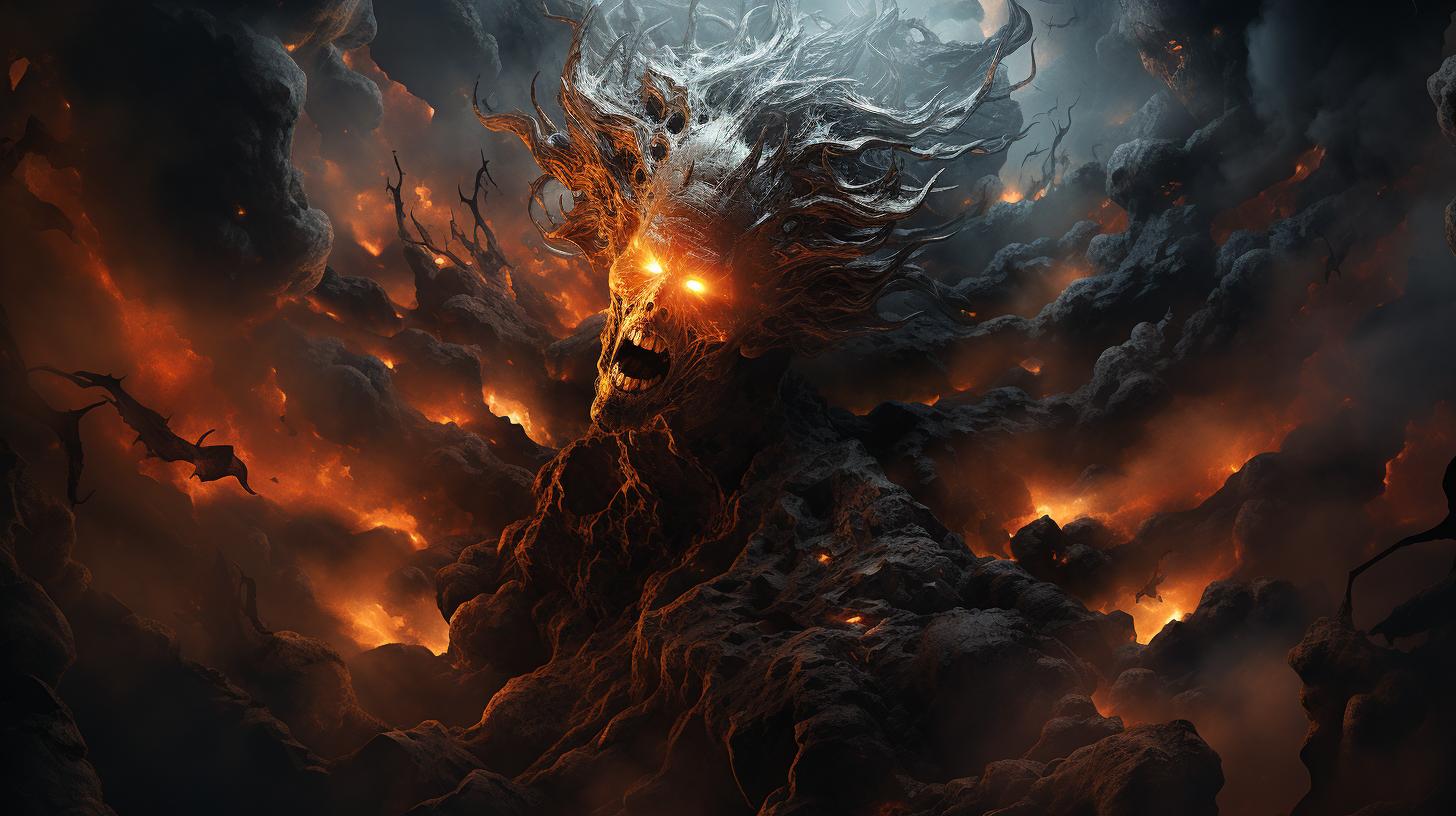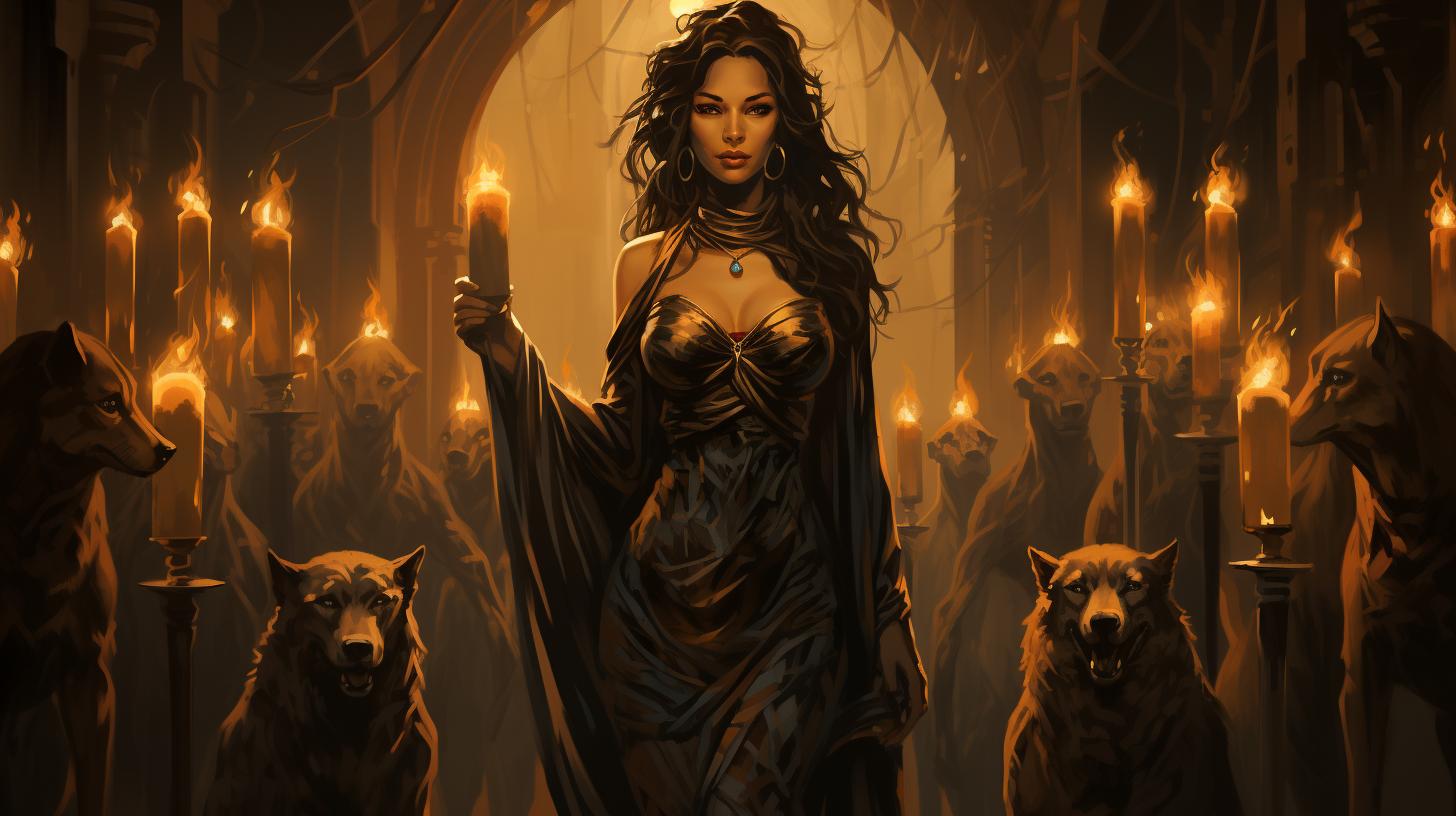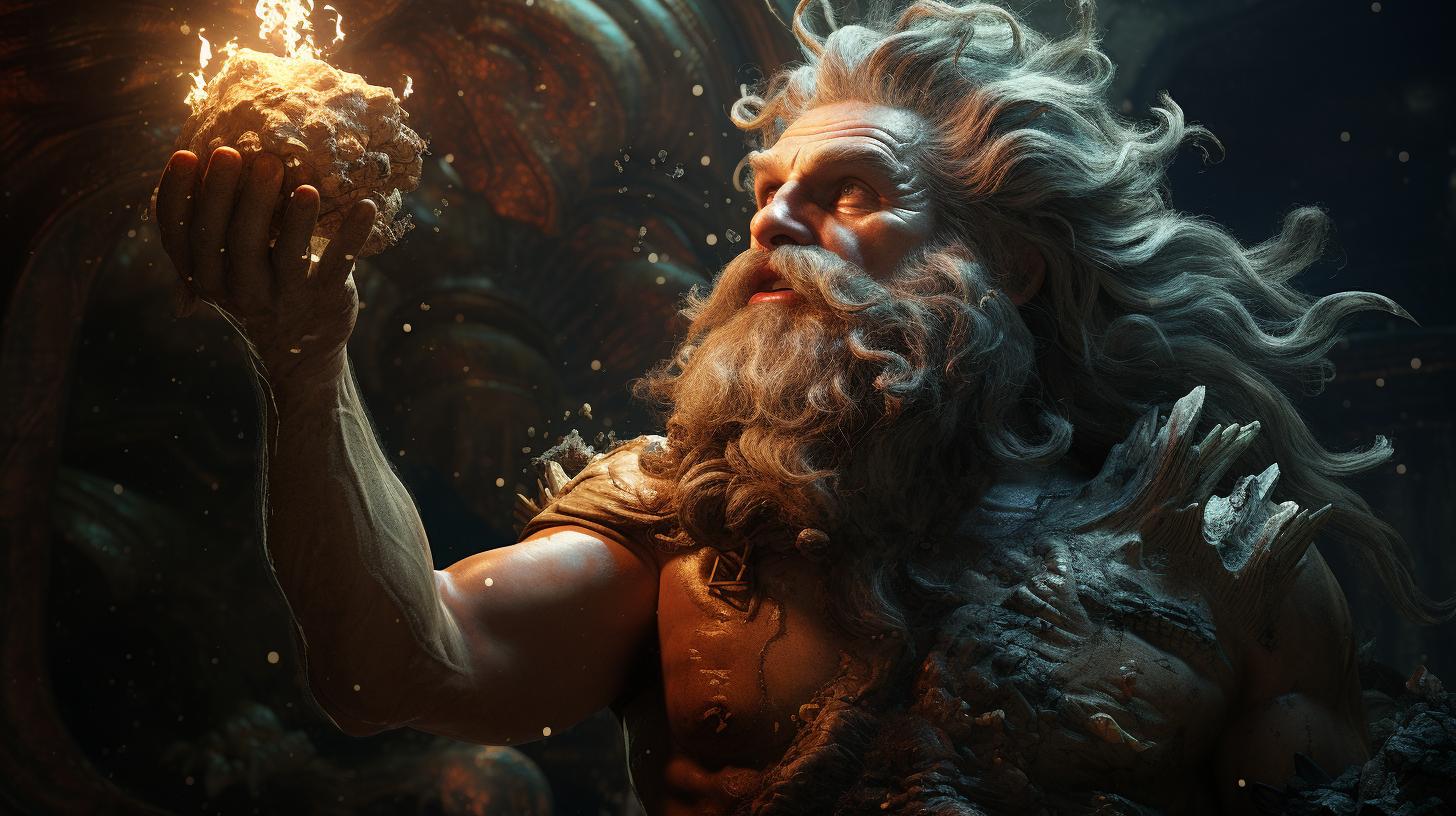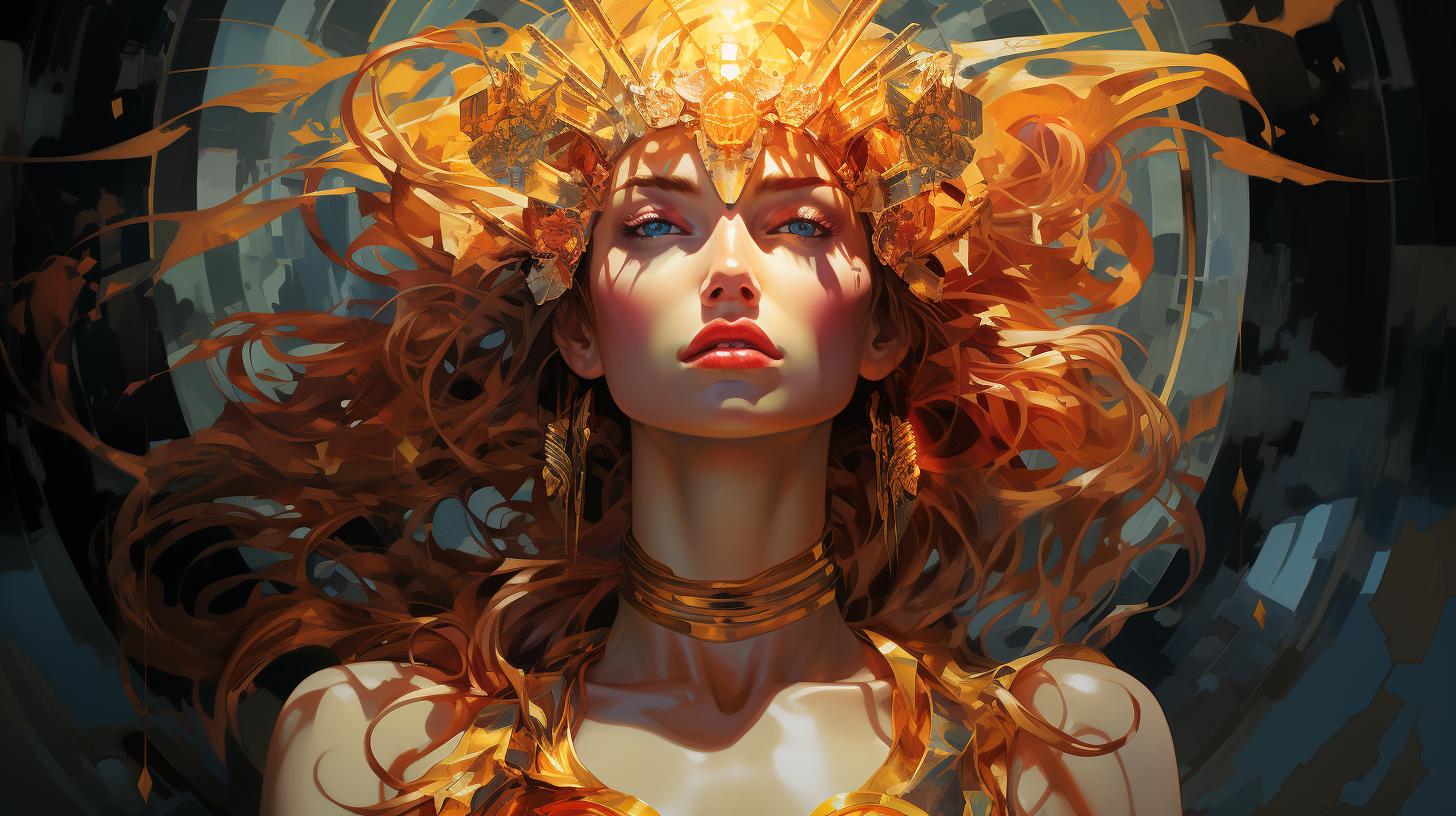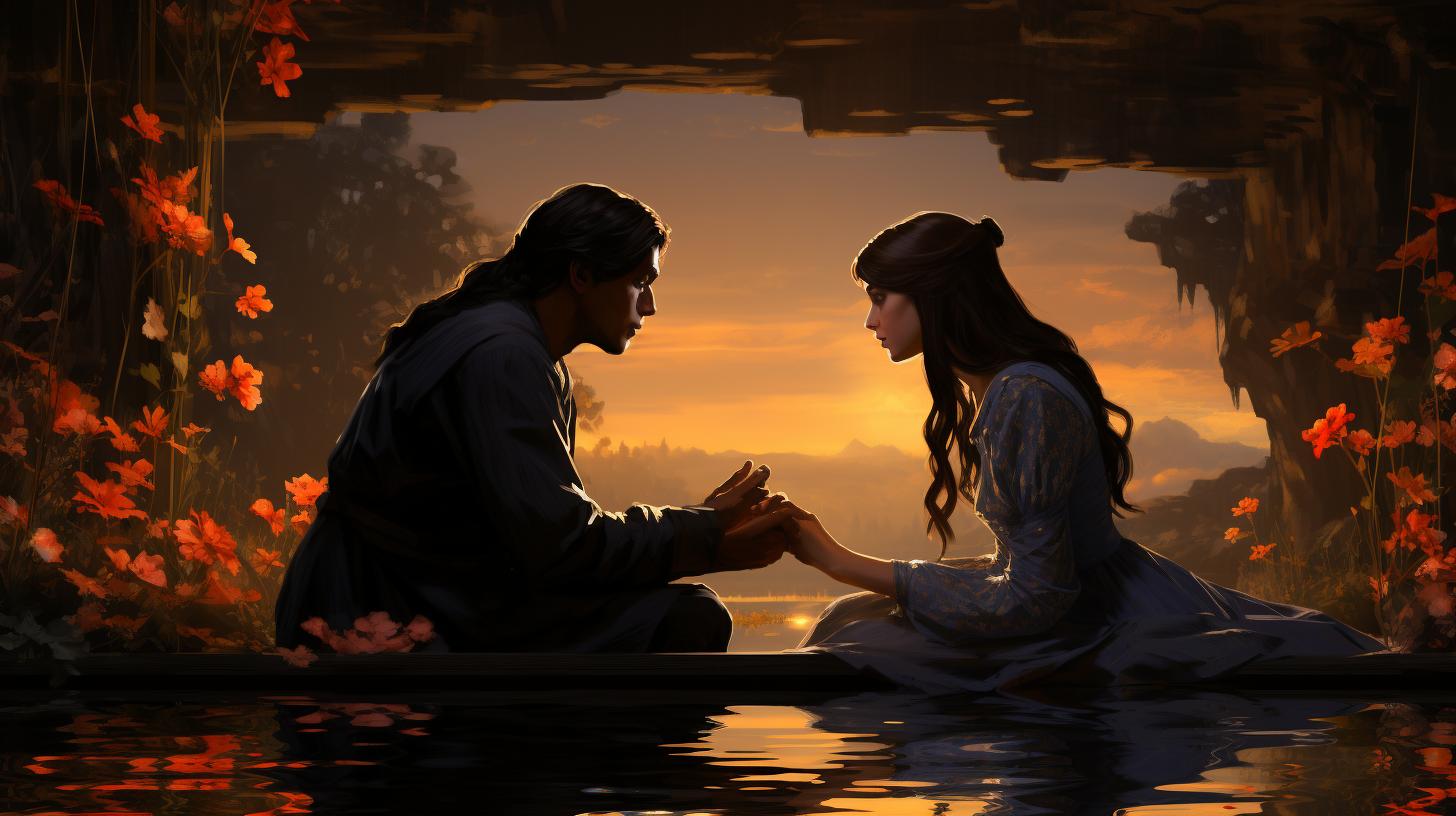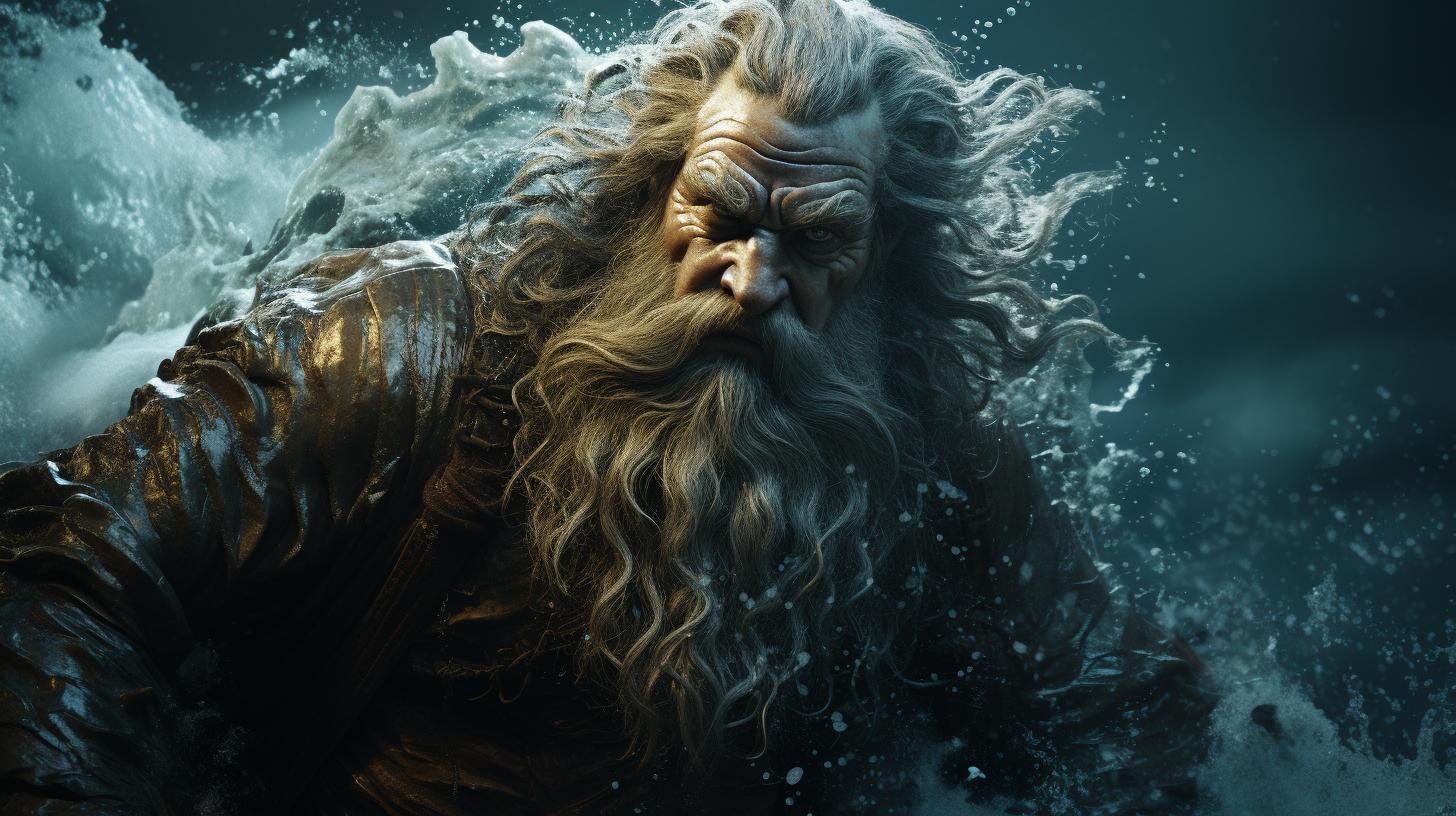Amphitrite And Poseidon: The Legendary Power Couple of the Sea
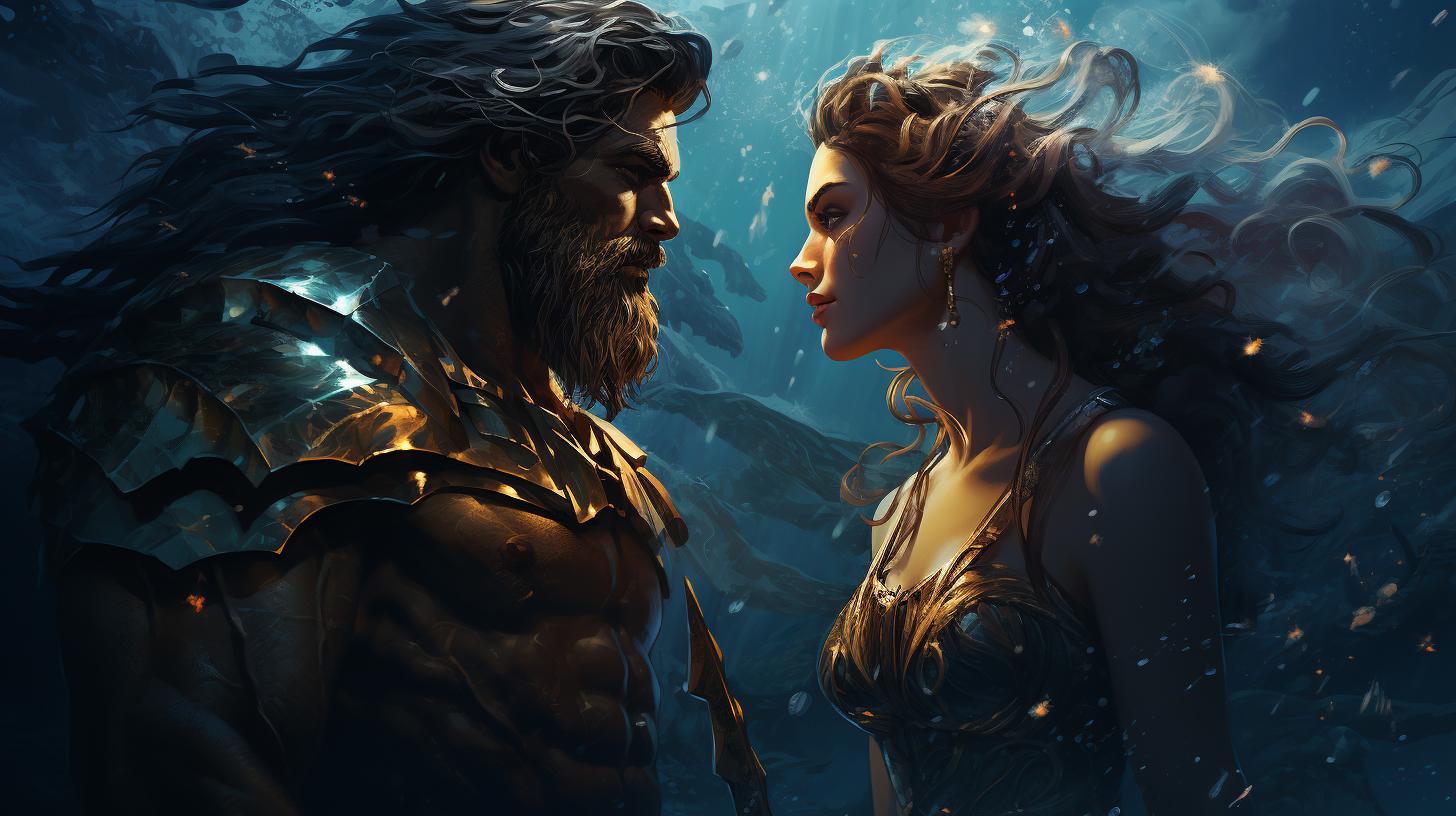
Amphitrite And Poseidon, the iconic power couple of Greek mythology, are revered as the Queen and God of the Sea. Amphitrite, daughter of Nereus and Doris, represents the personification of the ocean, while Poseidon rules over its vast waters.
Their legendary marriage and divine lineage, including their offspring such as Triton, have intrigued generations. Depicted in numerous artworks and worshipped by sailors and fishermen, Amphitrite and Poseidon symbolize the untamed forces and captivating allure of the sea.
Their captivating tale unfolds through the influence they have had on ancient Greek society, their rich symbolism in art and culture, and their enduring legacy in maritime exploration. This article delves into their mythical narratives, their connection to other deities, and the creatures associated with them.
Additionally, it explores the rituals and reverence bestowed upon Amphitrite and Poseidon, showcasing their profound impact on Mediterranean cultures throughout the ages.
Amphitrite: The Queen of the Sea
Amphitrite, a significant goddess in Greek mythology, holds the esteemed title of the Queen of the Sea. Her prominence lies in her close association with the vast ocean and her role as Poseidon’s wife, the god of the sea.
Exploring Amphitrite’s presence in Greek mythology reveals her intriguing tales from her divine lineage, the story of her marriage to Poseidon, and her own unique attributes and powers.
Amphitrite in Greek Mythology
In Greek mythology, Amphitrite symbolizes the essence of the sea itself. She embodies its deep mysteries, vastness, and unpredictable power. As a nereid or oceanid, she is born from the union of Nereus or Oceanus, respective deities of the sea, with her mother varying depending on the tradition.
Amphitrite’s divine origins tie her closely to the natural world, making her a respected and revered figure in Greek folklore.
The Marriage of Amphitrite and Poseidon
According to different versions, the matrimony of Amphitrite and Poseidon exhibits varying narratives. In one account, Poseidon abducts Amphitrite after being captivated by her graceful dance on the island of Naxos.
In another version, Amphitrite flees and seeks refuge with the Titan Atlas or hides in the depths of the sea before being discovered by a dolphin. This persuasive messenger convinces her to accept Poseidon’s proposal.
In gratitude, Poseidon transforms the dolphin into a celestial constellation.
Amphitrite’s Divine Lineage
Amphitrite’s divine lineage further elevates her status as a deity of utmost significance. She is the daughter of Nereus and Doris or Okeanos and Tethys, depending on the tradition.
Her esteemed parents imbue her with powerful attributes and abilities, granting her the authority to calm the waves and winds. As the mother of marine creatures like fish, dolphins, and seals, Amphitrite embodies the nurturing and protective aspects of the sea, ensuring the safety and abundance of its inhabitants.
Poseidon: The God of the Sea
Poseidon, known as the mighty God of the Sea in Greek mythology, holds a prominent place among the Olympian gods. His role and influence extend far beyond the depths of the ocean, making him a powerful and revered deity.
This section explores various aspects of Poseidon’s divine persona, his domain over the sea, and his significant relationship with Amphitrite and their children.
Poseidon in Greek Mythology
Poseidon, one of the sons of Cronus and Rhea, belongs to the generation of deities known as the Olympians. He is a brother to Zeus and Hades, and together they rule over the realms of the heavens, the underworld, and the sea respectively.
Poseidon’s association with the sea stems from the division of the cosmos among the three brothers, with Poseidon naturally receiving dominion over the vast and tumultuous waters.
Powers and Domain of Poseidon
Poseidon’s powers extend beyond being the ruler of the sea.
He commands the ability to conjure earthquakes, shake the earth, and destabilize the foundations of cities. This power is often depicted in myths, demonstrating his authority and awe-inspiring might. Sailors and seafarers invoke his favor for calm seas, favorable winds, and protection from storms, for his domain over the sea and his ability to control its waters are essential for their safe journeys.
Relationship with Amphitrite and their Children
Amphitrite, as the wife of Poseidon, plays a significant role in his life and mythical narratives. Together, they have several children, including Triton, a triton who serves as the herald of Poseidon. Their union represents the harmony and power shared between the sea’s god and queen, creating a divine connection that symbolizes the immense influence they hold over the maritime world.
The offspring of Amphitrite and Poseidon, such as the Nereids and Oceanids, embody the lineage of the sea and its magical creatures, further solidifying Poseidon’s dominion and his bond with Amphitrite.
The Symbolism of Amphitrite and Poseidon
Amphitrite as a Powerful Goddess
Amphitrite, the Queen of the Sea, holds immense power and influence in Greek mythology. She is revered as a deity who can calm the waves and the wind, ensuring safe passage for sailors.
As the mother of marine creatures such as fish, dolphins, and seals, she embodies the nurturing and life-giving aspect of the ocean.
Depictions of Amphitrite and Poseidon in Art and Culture
In ancient art, Amphitrite is often portrayed as a strikingly beautiful woman, resembling the goddess Aphrodite. She is frequently depicted wearing crab claws on her head, symbolizing her connection to the ocean.
Artistic representations showcase her riding chariots pulled by dolphins or gracefully riding the waves with tritons and dolphins surrounding her. These depictions highlight her regal presence and emphasize her association with the sea.
The Influence of Amphitrite and Poseidon in Greek and Roman Mythology
Amphitrite and Poseidon’s influence extends beyond Greek mythology and is prominent in Roman mythology as well.
Their divine union symbolizes the union of the sea and its ruling powers. Their depiction in myths and epic stories demonstrates their role in shaping the natural world, including controlling the turbulent forces of the ocean.
Their powerful presence and significant symbolism serve as a reminder of the vastness and unpredictability of the sea, which continues to captivate human imagination to this day.
Creatures of the Sea: Mythical Beings Associated with Amphitrite and Poseidon
In the enchanting realm of the sea, Amphitrite and Poseidon are surrounded by a fascinating array of mythical beings. These creatures, born from their divine union, hold special significance in Greek mythology and maritime lore.
Let’s delve into the intriguing world of these mythical beings:
Triton: The Son of Amphitrite and Poseidon
One prominent figure among the offspring of Amphitrite and Poseidon is Triton, a merman with the upper body of a human and the tail of a fish. Often depicted blowing a conch shell, Triton serves as the envoy and trumpeter of the sea, announcing the arrival of his father and carrying out his commands.
With his powerful presence, Triton symbolizes the might and authority of the sea, closely connected to the domain of his parents.
Nereids and Oceanids: The Descendants of Amphitrite
Amphitrite, being a nereid or an oceanid, depending on the tradition, has a lineage of daughters known as Nereids or Oceanids. These sea nymphs, often depicted as beautiful maidens, share a close bond with their mother and are associated with various aspects of the sea.
Nereids like Thetis, Galatea, and Psamathe, among others, possess their own unique qualities and play different roles in Greek mythology, highlighting the diversity and depth of Amphitrite’s progeny.
Sea Creatures and Divine Offspring
As the mother of the marine world, Amphitrite gives birth to an array of sea creatures and divine beings.
From graceful dolphins and majestic seals to mythical creatures like sea monsters and legendary chimeras, Amphitrite’s influence extends to every corner of the watery domain. These creatures, often appearing in tales of heroism and maritime adventures, embody the untamed power and mystery of the sea, forever intertwined with the divine lineage of Amphitrite and Poseidon.
Worship and Reverence for Amphitrite and Poseidon
Worship of Amphitrite and Poseidon held a significant place in ancient Greek society and continues to inspire reverence in modern culture.
Their divine connection to the sea made them highly esteemed and invoked for safe journeys and favorable outcomes at sea.
Amphitrite and Poseidon in Ancient Greek Society
In ancient Greek society, Amphitrite and Poseidon were worshipped as powerful deities associated with the vast oceans and seas. They were considered protectors of sailors and fishermen, with their power extending over maritime activities.
Their cults and temples were prominent in coastal cities, particularly in regions that heavily relied on maritime trade and exploration.
Rituals and Offerings to Honor Amphitrite and Poseidon
Devotees of Amphitrite and Poseidon would partake in various rituals and offer sacrifices to seek their favor and protection. These rituals often took place before embarking on sea voyages, with sailors and fishermen praying for calm waters, favorable winds, and bountiful catches.
Offerings such as oil, honey, and milk were made to appease the deities and ensure a successful journey.
Examples of Rituals and Offerings:
- Pouring of libations and offerings at sea or near coastal areas
- Lighting of incense and candles in temples dedicated to Amphitrite and Poseidon
- Offering of fish, fruits, and flowers as sacrifices
- Recitation of prayers and hymns to invoke their blessings
Amphitrite and Poseidon in Modern Culture
The influence of Amphitrite and Poseidon extends beyond ancient Greece and continues to captivate the imagination of artists, writers, and enthusiasts around the world.
Their divine personas and connection to maritime realms evoke a sense of awe and admiration among those who appreciate mythology and the power of the sea.
Their depictions can be found in various forms of contemporary art, literature, and even popular media.
Many maritime-themed festivals and events pay homage to Amphitrite and Poseidon, celebrating their mythical presence and the enduring legacy they embody.
In modern culture, Amphitrite and Poseidon serve as reminders of the immense power and beauty of the oceans, and their symbolic significance remains deeply ingrained in our collective consciousness.
Amphitrite and Poseidon in Literature and Mythological Narratives
Amphitrite and Poseidon’s captivating tales and mythological narratives have been immortalized in various works of literature throughout history. Their epic presence in Homeric epics, legendary stories, and interactions with other gods and goddesses offer a rich tapestry of their divine influence and enduring legacy.
Amphitrite and Poseidon in Homeric Epics
In both the Iliad and the Odyssey, Amphitrite and Poseidon play significant roles, showcasing their power and influence over the sea. Poseidon’s wrath and his alliance with the Greeks against the Trojans become central themes in the Iliad, portraying him as a formidable deity enforcing order and punishment.
Meanwhile, Amphitrite’s elegance and divine authority are alluded to in passing references, emphasizing her esteemed position as the Queen of the Sea.
Legendary Stories and Tales of Amphitrite and Poseidon
Numerous legendary stories and tales further highlight the enduring legacy of Amphitrite and Poseidon. These tales involve their interactions with other deities, mortal heroes, and mythical creatures.
One notable story involves Amphitrite’s interaction with the hero Teseo, as she bestows him with magnificent treasures to aid him in his quests. Another popular myth recounts Poseidon’s rivalry with Athena over the patronage of Athens and their competition in gifting the city with the most valuable offering.
These enduring stories depict the complex nature of Amphitrite and Poseidon’s characters and their impact on ancient Greek culture.
Interactions with Other Gods and Goddesses
Amphitrite and Poseidon’s interactions with other gods and goddesses further enrich their mythological narratives. Poseidon’s conflicts and alliances with Zeus, Hades, and other Olympian gods unveil the intricate dynamics of divine hierarchy and power struggles.
Meanwhile, Amphitrite’s relationships with her parents, Nereo and Doris, or Oceanus and Tethys, shed light on her divine lineage and her connection to the larger pantheon of gods and goddesses.
These interactions demonstrate the interconnectedness of Greek mythology and the significant roles Amphitrite and Poseidon play within it.
Unveiling the rich tapestry of Amphitrite and Poseidon’s presence in literature and mythological narratives, these stories bring to life their divine power, complex personalities, and enduring influence on ancient Greek culture.
Legacy and Impact of Amphitrite and Poseidon
Amphitrite and Poseidon, as the iconic power couple of the sea, have left a lasting legacy and an indelible impact on various aspects of human civilization throughout history.
Influence on Maritime Exploration and Navigation
The legendary tales of Amphitrite and Poseidon have been a source of inspiration for sailors, explorers, and navigators across the ages.
The vast realms of the sea, ruled by Poseidon, have fueled the dreams of daring adventurers and encouraged the exploration of uncharted waters. The mythological narratives surrounding Amphitrite and Poseidon have instilled a sense of reverence and awe for the sea, promoting a deep understanding of its power and unpredictable nature.
Amphitrite and Poseidon in Contemporary Maritime Symbolism
Even in modern times, the influence of Amphitrite and Poseidon can be witnessed in various maritime symbols and cultural references. Their imagery is often depicted in maritime logos, emblems, and ship names, representing strength, protection, and a connection to the vastness of the ocean.
The symbolism of Poseidon’s trident and Amphitrite’s presence on seashells and waves continues to inspire contemporary maritime aesthetics and design.
The Eternal Bond of Amphitrite and Poseidon through the Ages
The eternal love and partnership of Amphitrite and Poseidon have served as an emblematic representation of the unbreakable bond between the sea and its ruler.
Their mythological union exemplifies the harmonious relationship between nature’s forces and the divine realm. Through their immortal connection, they personify the interdependence of the sea, its creatures, and the divine realm, leaving an enduring testament to the enduring power and beauty of the marine world.
- Amphitrite and Poseidon continue to inspire artists, writers, and filmmakers, showcasing their influence on contemporary culture and creative expression.
- Through their legacy, the reverence for the sea and its spiritual significance has carried on, influencing maritime rituals, celebrations, and ceremonies.
- The mesmerizing tales of Amphitrite and Poseidon serve as a reminder of humanity’s eternal fascination with the unknown depths of the sea, sparking a sense of wonder and awe that extends beyond geographical boundaries and time.
.

